|
|
Post by amygdule on Mar 12, 2022 0:02:12 GMT -5
Thanks for sharing the Oregon coast coral amygdule . Very nice coralite and tube details. Are they easy to find or infrequent ? If you know the era and type please share. I used to know, but I forgot. A couple of decades ago, I met an old time rockhound that was a very prolific collector. He invited me to his place in Agate Beach and showed me some of his coral. I was impressed. He had submitted a sample to one of the universities and they told him that it was a very old species. As I recall, about 250 million years old. The oldest fossil bearing marine sediments exposed around here are only about 30 million years old. It is very rare. There is no way to know where it originally came from, as it travels along in the alluvial gravels. Out of all the tons of beach gravel that I have collected, I have only found about 5 lbs. The largest piece is about 2 lbs. I've seen a couple that were in the 3-4 lb range. Here is a couple of more pics of what I think is a complete head that is about 3" in diameter and about 1.5" thick. 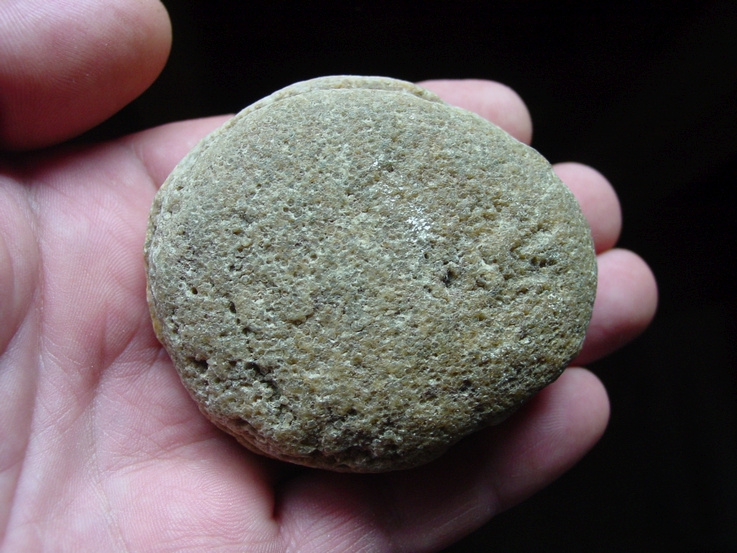  Some other type of Hexacoral ? Some other type of Hexacoral ? |
|
jamesp
Cave Dweller 
Member since October 2012
Posts: 36,607
|
Post by jamesp on Mar 12, 2022 2:00:29 GMT -5
I can't help with the ID amygdule. Wish I could. Fine and apparently rare specimens regardless. The only way I know about my coral is because a PHD Florida paleontologist identified it lol. This is the identification parameters of most corals using my coral as an example:  However I do find various -species- of scleractinia and they are all OLIGOCENE era. I believe the species Floridaeprima is a convenient B.S. label for that given fossil coral found in a given location(s) in Florida. Most coral ID is complicated with living corals much less fossil corals. Truth is, most fossil corals can not be identified in all aspects. This may help with ID of your hexacoral corals. Hex corals are all complex to ID too. If they are old they will fall in the Rugosa category, new go to the Scleratinia. If you are brave and exceedingly brilliant you can open the link and give it a try: app.pan.pl/archive/published/app25/app25-395.pdfIntro to above link: "Modern stony corals (hexacorals) belong to the OLder Scleractinia which ranges from Middle Triassic to Holocene. The Paleozoic analog of the Scleractinia is the: Order Rugosa (rugose or tetracorals) which ranges from the Middle Ordovician through the Permian. Two hypotheses of the relationship between these two groups of corals are current: 1) direct descent; the Scleractinia evolved directly from the Rugosa, either mono- or polyphyletically; and 2) independent origin; the Scleractinia evolved by the development of a skeleton in members of one of the soft-bodied anthozoan groups that probably existed throughout the Paleozoic." |
|
jamesp
Cave Dweller 
Member since October 2012
Posts: 36,607
|
Post by jamesp on Mar 12, 2022 2:27:39 GMT -5
DNA can be used to identify a human accurately. Not so easy with living corals: "Coral tissues contain strong collagen fibers, which can make cells lysis difficult. However, high-quality DNA and RNA can still be isolated and purified from coral tissue with special considerations." Coral is a simple organism with complex DNA issues: "Corals respond to changing ocean conditions by altering regulation of the DNA message" www.sciencedaily.com/releases/2016/01/160107095039.htmI learned about this DNA issue when I was asked to take two Florida PHD coral scientists coral collecting. I hosted 7 people that trip. Two PHD's and a coral hunting buddy: 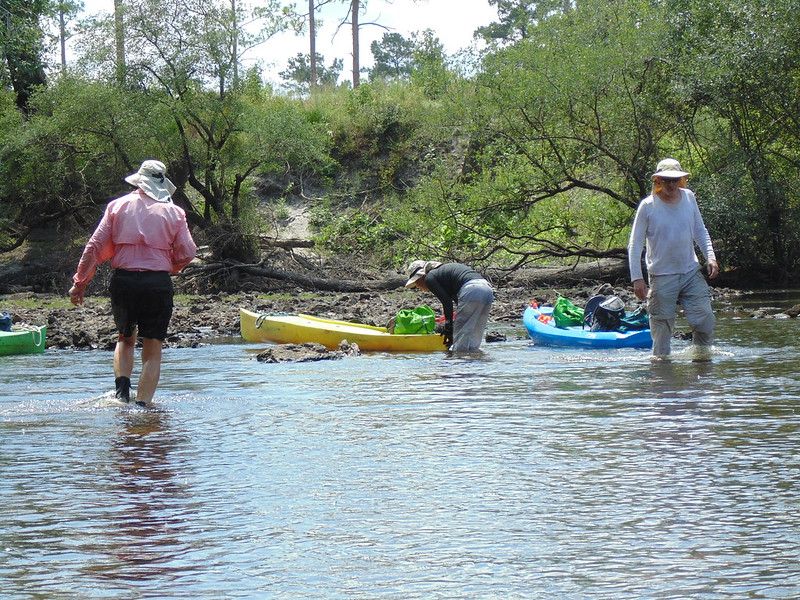 And some RTH Buddies having too much fun !:  |
|
jamesp
Cave Dweller 
Member since October 2012
Posts: 36,607
|
Post by jamesp on Mar 12, 2022 2:47:59 GMT -5
Some funky tumble able chips from a fast flowing Swift Creek.  Slab  Coral heads from an iron rich clay vein: 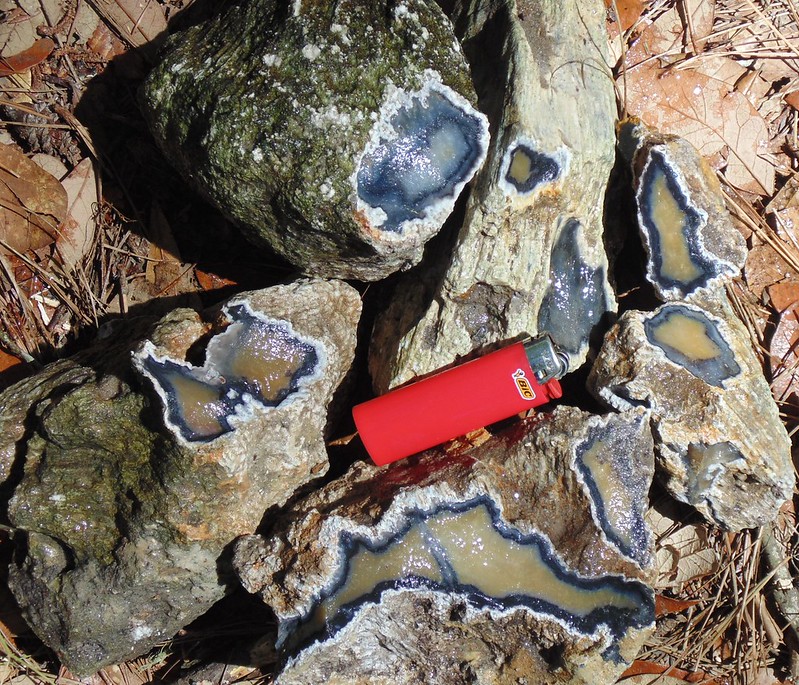 Swift Creek is swift  Calmer section, coral litters the bottom of the creek  watch for water snakes when snorkeling(some bad experiences)  |
|
jamesp
Cave Dweller 
Member since October 2012
Posts: 36,607
|
Post by jamesp on Mar 12, 2022 2:56:46 GMT -5
Would a little Utah horn coral fit in this thread?  Found some info on your red horn coral from an ad Randy. It is an early coral. Beautiful. 1000's of feet up, must have caught a ride on one of those tectonic elevators of the wild wild west ! "This is a beautiful section of Pennsylvanian aged (~300 million year old), red agatized horn coral from Utah. One end of the section has been polished to reveal the amazing internal structure. The ancient coral reefs now lie thousands of feet up in the mountains of Utah. As these corals fossilized the original organic material was replaced by silica and other minerals producing the brilliant coloration. This horn coral is not actively being mined anymore so, it's getting harder to acquire." "horn coral, any coral of the order Rugosa, which first appeared in the geologic record during the Ordovician Period, which began 488 million years ago; the Rugosa persisted through the Permian Period, which ended 251 million years ago." |
|
jamesp
Cave Dweller 
Member since October 2012
Posts: 36,607
|
Post by jamesp on Mar 12, 2022 3:02:01 GMT -5
Divisions of taxonomy in Biology for the record. For a human: 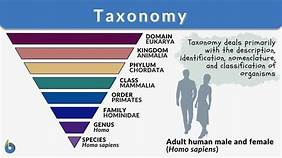 For a coral:  |
|
|
|
Post by fernwood on Mar 12, 2022 3:17:31 GMT -5
|
|
|
|
Post by HankRocks on Mar 12, 2022 5:08:41 GMT -5
watch for water snakes when snorkeling(some bad experiences)  "Snorkeling and Water Snakes!!" doesn't sound like a good match at all!!! Good looking material. |
|
|
|
Post by RickB on Mar 12, 2022 5:50:37 GMT -5
DNA can be used to identify a human accurately. Not so easy with living corals: "Coral tissues contain strong collagen fibers, which can make cells lysis difficult. However, high-quality DNA and RNA can still be isolated and purified from coral tissue with special considerations." Coral is a simple organism with complex DNA issues: "Corals respond to changing ocean conditions by altering regulation of the DNA message" www.sciencedaily.com/releases/2016/01/160107095039.htmI learned about this DNA issue when I was asked to take two Florida PHD coral scientists coral collecting. I hosted 7 people that trip. Two PHD's and a coral hunting buddy:  And some RTH Buddies having too much fun And some RTH Buddies having too much fun !:  James, I see Keith, Mark and maybe Anne in the photo, all friends. 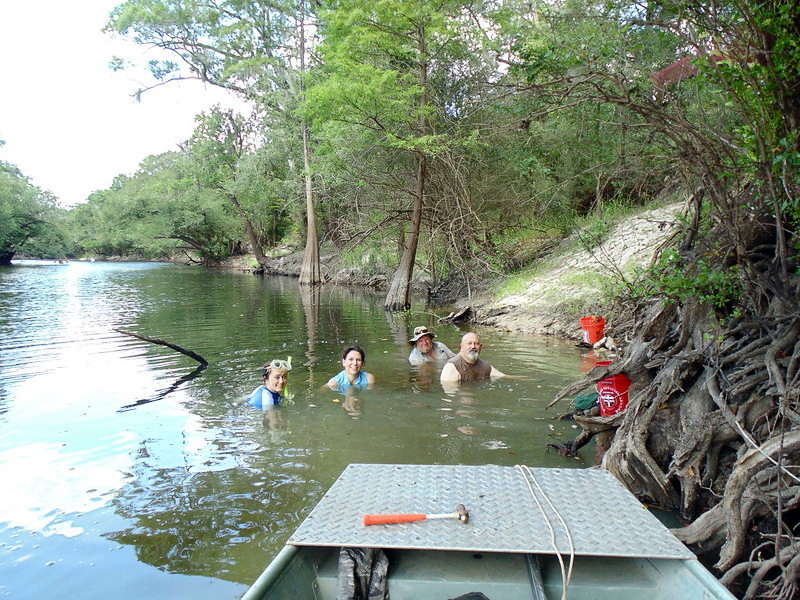 |
|
jamesp
Cave Dweller 
Member since October 2012
Posts: 36,607
|
Post by jamesp on Mar 12, 2022 9:18:39 GMT -5
Correct RickB, a fine bunch. We had a great time. Those 4 spent that whole day harvesting specimens out of that section of shore. Mark and Keith were well versed at collecting on the Withlacoochee, Sonya and Anne were on sensory overload. The PHD folks were blown away at the shear volume of fossilized coral and found a couple of points which made their trip. there is very few places in Georgia where so much chert and silicified material can be found. |
|
jamesp
Cave Dweller 
Member since October 2012
Posts: 36,607
|
Post by jamesp on Mar 12, 2022 9:21:06 GMT -5
Pretty sure this is a piece of horn coral. Found at the base of a tree while mushroom hunting in my woods, May, 2021. 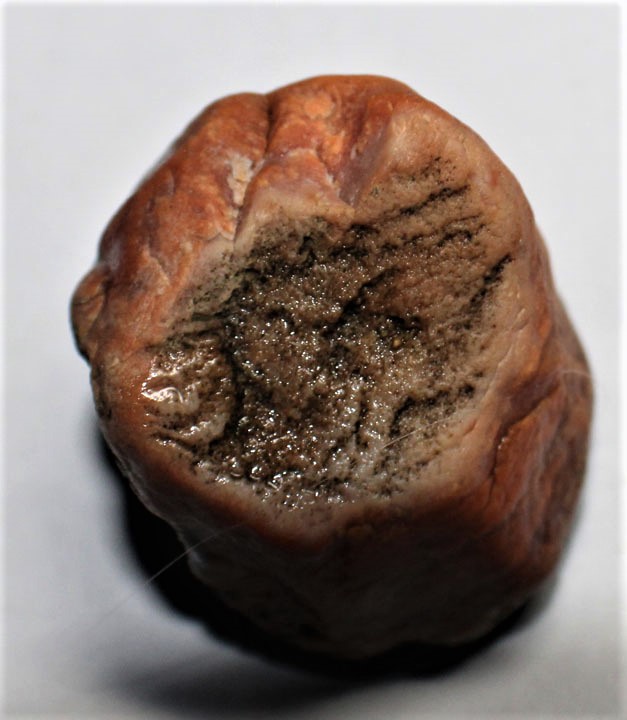   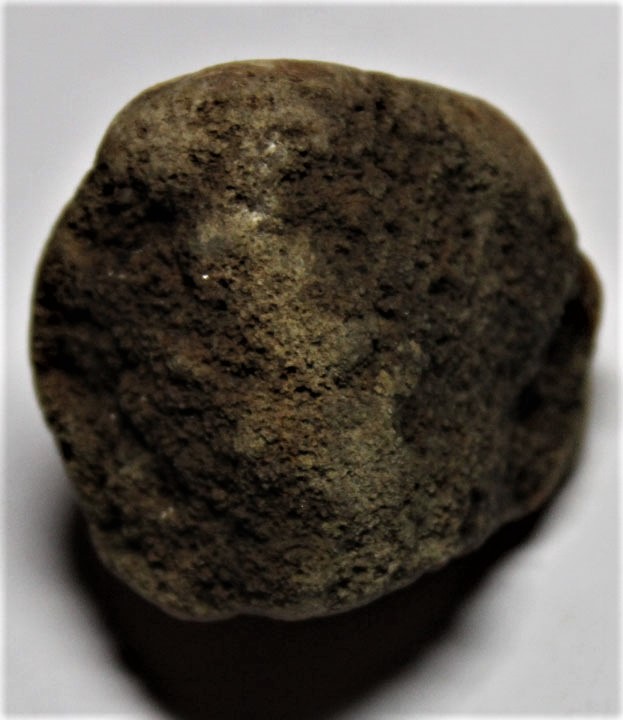 Rugose corals are fairly common in the Great Lakes area Beth. I believe horn corals fall in the rugose category. |
|
jamesp
Cave Dweller 
Member since October 2012
Posts: 36,607
|
Post by jamesp on Mar 12, 2022 9:26:58 GMT -5
watch for water snakes when snorkeling(some bad experiences)  "Snorkeling and Water Snakes!!" doesn't sound like a good match at all!!! Good looking material. There was not much space for a fellow snorkeling and a snake to pass by Henry. |
|
jamesp
Cave Dweller 
Member since October 2012
Posts: 36,607
|
Post by jamesp on Mar 12, 2022 9:46:28 GMT -5
The top of this coral has two boring clam holes.  This bore hole running left to right filled with silica. 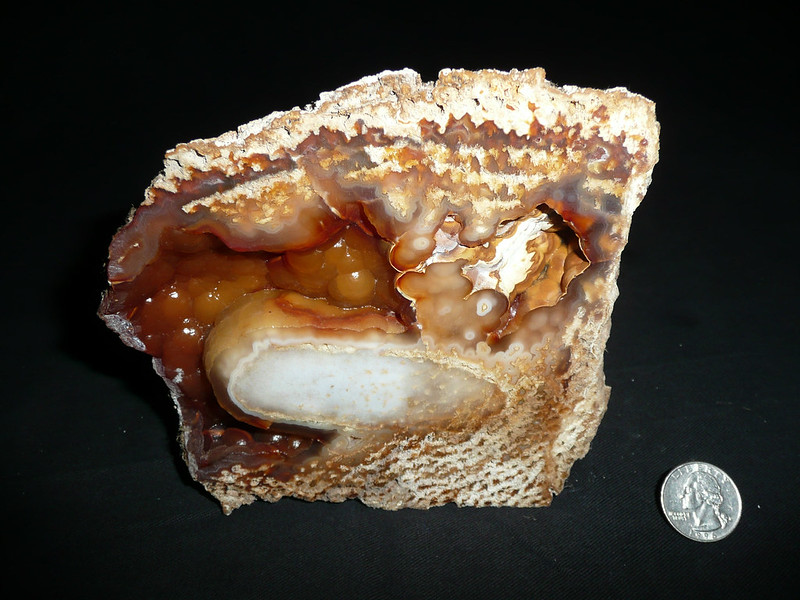 |
|
|
|
Post by HankRocks on Mar 12, 2022 10:07:13 GMT -5
"Snorkeling and Water Snakes!!" doesn't sound like a good match at all!!! Good looking material. There was not much space for a fellow snorkeling and a snake to pass by Henry. It's the Cottonmouths that scare me. I know the books say that they are not aggressive. Apparently some of those snakes cannot read!!! |
|
jamesp
Cave Dweller 
Member since October 2012
Posts: 36,607
|
Post by jamesp on Mar 12, 2022 10:43:20 GMT -5
|
|
brybry
Cave Dweller  Enter your message here...
Enter your message here...
Member since October 2021
Posts: 1,221
|
Coral
Mar 12, 2022 11:13:16 GMT -5
via mobile
jamesp likes this
Post by brybry on Mar 12, 2022 11:13:16 GMT -5
Would it because they are smaller so it's less spread out?
|
|
jamesp
Cave Dweller 
Member since October 2012
Posts: 36,607
|
Post by jamesp on Mar 12, 2022 11:35:00 GMT -5
There was not much space for a fellow snorkeling and a snake to pass by Henry. It's the Cottonmouths that scare me. I know the books say that they are not aggressive. Apparently some of those snakes cannot read!!! In this case the current is so strong the snake can't out swim the flow when crossing the creek. The first small snake wrapped around my belt line and the 2nd one around my thigh ! Enough, I moved to a wider section of the creek. The 2nd one appeared to be a cottonmouth but I was panicking too much to make an accurate ID. They say they won't bite underwater but I wasn't taking that chance ! The water is straight out of a karst spring 4 miles upstream and at such high flows it stays 72F for a long distance. The cold water renders reptiles lethargic. But also allows them to stay active all year when sunny spots are available. This is a shame because the coral in higher water flows typically has better color, the chemicals in the water are pushed into the rock from the force of the water flow. In many case these corals spend long periods of time concreted into the hard pan in shoals. In some cases the exposed half has great color and the concreted half is natural dull white/grey. In this case the snakes are guarding the most colorful specimens  . This section of the creek was slower moving. Much of the coral was sitting in(probably ancient) black muck and had a lot of black color in them. 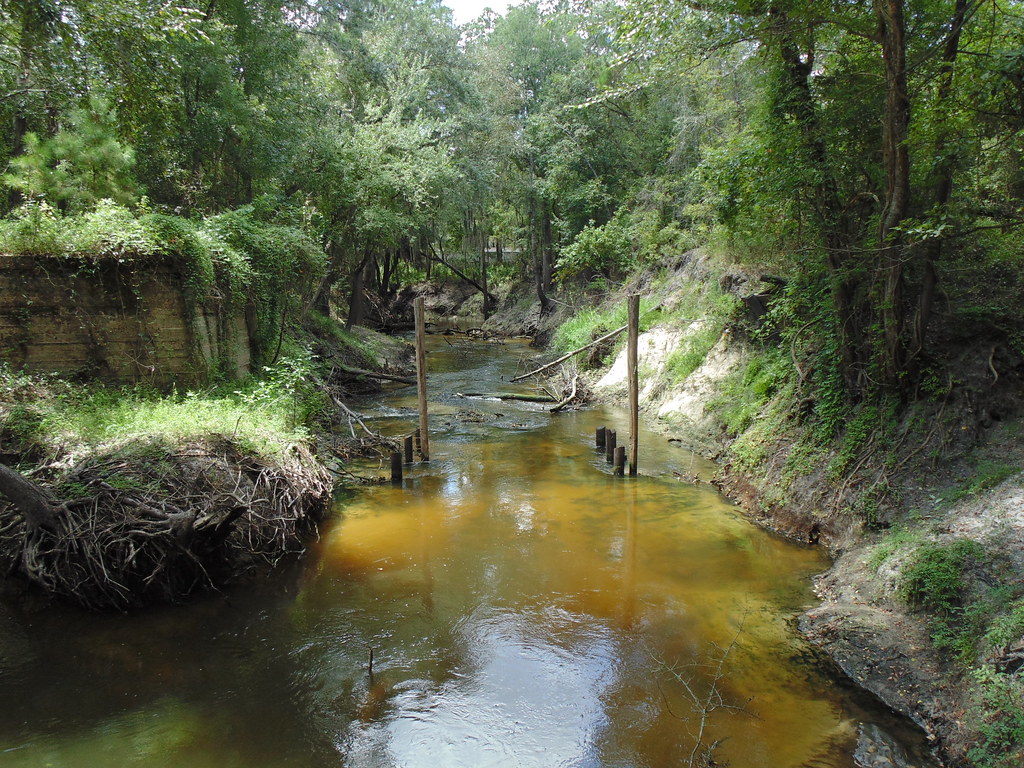 Coral from the black muck in above photo. I keep detailed photo records and have a lot of ruined waterlogged cameras lol. 100 feet downstream in the high flow they are in the yellow range. What could make that water that weird yellow color ?  |
|
jamesp
Cave Dweller 
Member since October 2012
Posts: 36,607
|
Post by jamesp on Mar 12, 2022 11:52:03 GMT -5
Would it because they are smaller so it's less spread out? It is difficult to say brybry. Theses corals were at ground level at one point sitting on limestone bedrock and fairly organized until the newer river dissolved the limestone bedrock out from under them. Then they all ended up down in the river channel and well mixed up. It is often called shelf coral because it sits on the old limestone bedrock shelf higher up on the river bank. The coral layer is thin compared to the sand overburden covering the coral and the bedrock. If they sat in sand when they silicified they are a dull grey color. If sitting in clay they typically have color. To find color look for clay on the limestone shelf higher upon the river bank. In a mile of river many types of clay can be encountered. And many color variations in the coral. |
|
|
|
Post by RickB on Mar 12, 2022 11:57:25 GMT -5
It's the Cottonmouths that scare me. I know the books say that they are not aggressive. Apparently some of those snakes cannot read!!! In this case the current is so strong the snake can't out swim the flow when crossing the creek. The first small snake wrapped around my belt line and the 2nd one around my thigh ! Enough, I moved to a wider section of the creek. The 2nd one appeared to be a cottonmouth but I was panicking too much to make an accurate ID. They say they won't bite underwater but I wasn't taking that chance !I wish I had a dollar for every time I saw a water snake or moccasin swimming in the water with a live fish in it's mouth. The gators could be another issue. |
|
jamesp
Cave Dweller 
Member since October 2012
Posts: 36,607
|
Post by jamesp on Mar 12, 2022 12:13:24 GMT -5
In this case the current is so strong the snake can't out swim the flow when crossing the creek. The first small snake wrapped around my belt line and the 2nd one around my thigh ! Enough, I moved to a wider section of the creek. The 2nd one appeared to be a cottonmouth but I was panicking too much to make an accurate ID. They say they won't bite underwater but I wasn't taking that chance !I wish I had a dollar for every time I saw a water snake or moccasin swimming in the water with a live fish in it's mouth. Well that solves the mystery 'do snakes bite underwater ?". If they are catching fish they are biting underwater ! An old timer taught me a trick Rick. Tie a fishing line to root on the creek bank and tie a hook baited with a minnow. The next morning you WILL have either a common water snake or a moccasin hooked. People say moccasins are docile. That has not been my experience. Of course most bites occur when someone innocently steps on a snake. |
|